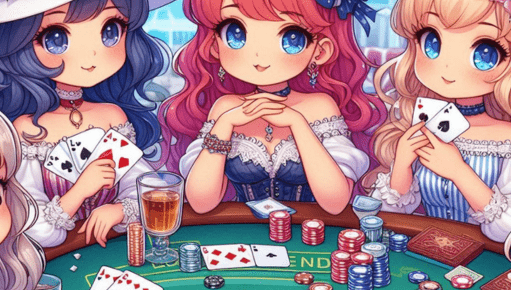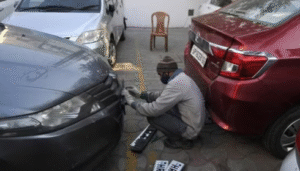
Indian Matka
Indian Matka, often referred to as Satta Matka, is a popular form of lottery that has captivated many enthusiasts across India. This intriguing gambling game has a rich history, evolving from a simple game of betting to a complex network of numbers and probabilities. While many participate in it for the thrill, the game is not without its controversies and legal implications. This article delves into the origins, evolution, and current state of Indian Matka, providing an in-depth look at what makes this game so compelling.
The Origins of Indian Matka
The term “Matka” originally referred to an earthen pot. In the early days, numbers were written on pieces of paper and placed inside a matka, from which one chit would be drawn to determine the winner. The game traces its roots back to the 1950s when it was started by Ratan Khatri and Kalyanji Bhagat. Initially, it was linked to the opening and closing rates of cotton traded on the New York Cotton Exchange, and participants would bet on these numbers.
However, due to its increasing popularity and the rising number of participants, the game quickly transformed. By the 1960s and 1970s, Indian Matka had evolved into a full-fledged gambling enterprise, with bookies operating throughout Mumbai and other parts of India.
How Indian Matka Works
Indian Matka is essentially a game of chance involving numbers from 0 to 9. The game is divided into two parts: the opening and closing numbers. Players place their bets on a combination of these numbers. For example, if a player bets on the number combination 4-5-6, and the drawn numbers match this combination, the player wins.
The most common forms of betting in Indian Matka include:
- Single: A bet on a single number between 0 to 9.
- Jodi/Pair: A bet on a pair of numbers like 11, 34, 56, etc.
- Patti/Panna: A bet on a three-digit combination like 123, 234, etc.
- Half Sangam: A bet on one Patti/Panna and one Jodi.
- Full Sangam: A bet on two Patti/Panna.
Players choose their numbers and place their bets with bookies, who record these bets and later distribute the winnings based on the drawn numbers.
The Rise and Fall of Indian Matka
Indian Matka gained widespread popularity in the 1970s and 1980s, with Mumbai becoming the hub of this gambling game. Thousands of people, ranging from the common man to wealthy businessmen, participated in the game. The stakes were high, and so were the rewards. However, with the rise in popularity came increased scrutiny from law enforcement agencies.
By the 1990s, police crackdowns and legal actions led to a significant decline in the number of Matka operators. Many bookies were arrested, and several gambling dens were shut down. Despite these efforts, the game persisted underground, adapting to the changing legal landscape.
The Legal Status of Indian Matka
The legal status of Indian Matka has always been a grey area. Gambling, in general, is prohibited under the Public Gambling Act of 1867 in India. However, there are exceptions for lotteries and horse racing, which are regulated by state governments. Matka, being a form of gambling, falls under the illegal category, but its popularity has led to a continuous cat-and-mouse game between the authorities and operators.
In recent years, the advent of online platforms has given a new lease of life to Indian Matka. Many websites now offer Matka games, allowing players to participate from the comfort of their homes. While these platforms claim to operate legally, the lack of clear regulations makes it a risky endeavor for players.
The Impact of Indian Matka on Society
The allure of quick money has drawn many individuals to the world of Indian Matka. For some, it is merely a recreational activity, but for others, it becomes an addiction with devastating consequences. The promise of high returns often leads players to bet beyond their means, resulting in financial ruin and family disputes.
Moreover, the underground nature of the game has given rise to various criminal activities, including extortion, loan sharking, and money laundering. The involvement of organized crime syndicates in the Matka business has further complicated the situation, making it a challenging issue for law enforcement agencies.
Indian Matka in Popular Culture
The influence of Indian Matka on popular culture cannot be understated. The game has been depicted in various Bollywood movies and television shows, often portraying the glamorous yet dangerous world of gambling. Films like “Khuda Gawah” and “Rangeela” have featured characters involved in the Matka business, highlighting its impact on society.
In addition to films, several novels and short stories have explored the theme of Matka, portraying it as a symbol of the human desire for fortune and the lengths people will go to achieve it.
The Future of Indian Matka
The future of Indian Matka remains uncertain. While the game has adapted to changing times, moving from traditional betting setups to online platforms, it continues to face legal and ethical challenges. The lack of regulation in the online gambling space has raised concerns about the safety and fairness of these platforms.
One possible solution is the legalization and regulation of Matka and other forms of gambling. By bringing the game under a legal framework, the government can ensure fair play, prevent criminal activities, and generate revenue through taxation. However, this is easier said than done, given the social and political sensitivities surrounding gambling in India.
Responsible Gambling and Alternatives
For those who enjoy the thrill of games like Final Ank, it’s essential to practice responsible gambling. Setting limits on how much time and money one spends on these activities can help prevent addiction and financial problems. Additionally, there are several legal and safer alternatives to Matka, such as state-run lotteries and online gaming platforms that offer skill-based games.
Many organizations also provide support and counseling for individuals struggling with gambling addiction. Recognizing the problem and seeking help is the first step towards recovery and a healthier relationship with gaming and gambling.
Conclusion
Indian Matka is more than just a game; it is a reflection of human nature’s fascination with chance, fortune, and risk. Despite its controversial status, the game continues to thrive, adapting to modern times and technology. Understanding the history, mechanics, and impact of Indian Matka is crucial for anyone interested in the subject, whether from a sociological, economic, or recreational perspective.
While the game offers excitement and the allure of quick riches, it is essential to approach it with caution. The risks associated with gambling, both legal and personal, are significant. For those who choose to participate, being informed and practicing responsible gambling is key to enjoying the game without falling into its potential pitfalls.
As Indian society continues to evolve, the debate over the legalization and regulation of gambling, including Matka, will likely continue. Whether the game will be accepted as a legitimate form of entertainment or remain in the shadows is a question that only time will answer. For now, Indian Matka remains a fascinating, if controversial, part of India’s cultural and social fabric.








